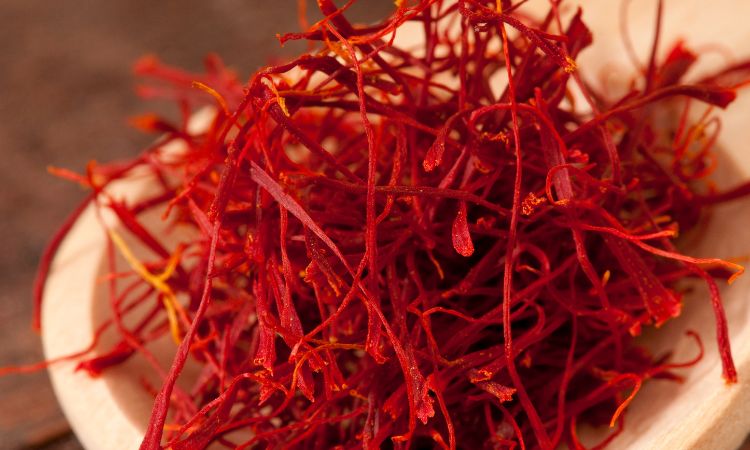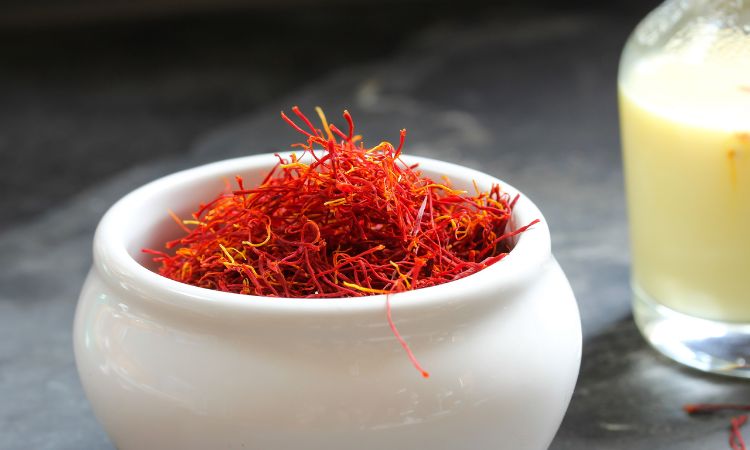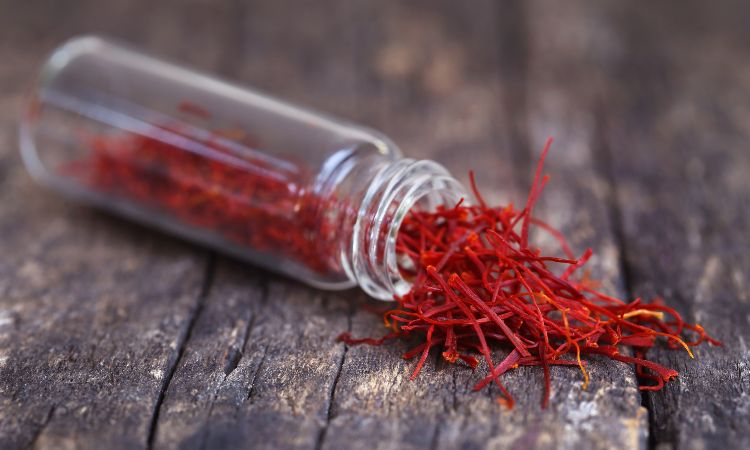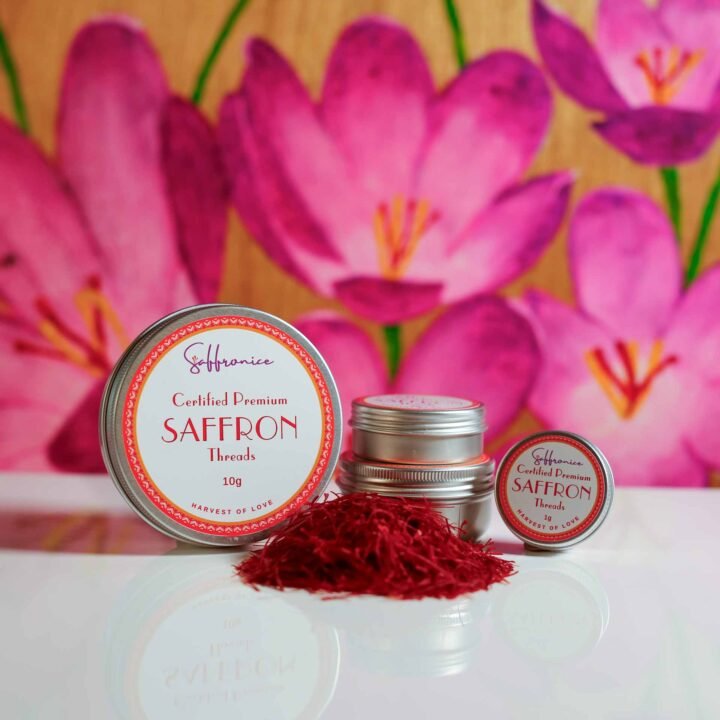📌 Quick Answer: Saffron’s cultural significance spans over 4,000 years across civilizations, from ancient Greek frescoes and Egyptian royal rituals to Persian spiritual ceremonies and European medieval medicine. This precious spice symbolizes wealth, purity, divine light, and spiritual enlightenment while playing crucial roles in cooking, medicine, art, and religious practices throughout human history.
The Historical Journey of Saffron Across Civilizations
Understanding what saffron is requires exploring its remarkable cultural journey that began over 4,000 years ago. The history and origins of saffron reveal how this precious spice evolved from a wild Crocus cartwrightianus plant in ancient Greece to become one of humanity’s most treasured cultural symbols.
Early Cultivation and Domestication
Archaeological evidence places saffron’s first systematic cultivation in Minoan Crete around 1600-1500 BCE, where the famous Akrotiri frescoes depict elaborate saffron harvest ceremonies. These early depictions suggest that saffron held both economic and spiritual significance long before recorded history documented its various applications.
Prehistoric Cultural Indicators:
- Cave paintings in Iran, potentially showing saffron use, date back 50,000 years
- Minoan palace frescoes demonstrating sophisticated harvest rituals
- Early Bronze Age artifacts suggesting ceremonial saffron applications
- Archaeological residues confirming ancient processing techniques
- Trade route evidence indicating early commercial distribution

Geographic and Cultural Expansion
From its Mediterranean origins, saffron cultivation spread through ancient trade networks, reaching Persia, India, and eventually spanning three continents. Each civilization adapted saffron to its unique cultural contexts while maintaining its association with luxury, spirituality, and healing.
Cultural Diffusion Patterns:
- Ancient Greece (1600-1500 BCE): Artistic and ceremonial applications
- Persian Empire (500 BCE): Royal cultivation and spiritual significance
- Roman Empire (100 BCE-400 CE): Luxury consumption and trade expansion
- Islamic Golden Age (700-1400 CE): Scientific documentation and medical applications
- Medieval Europe (1000-1500 CE): Monastic cultivation and medicinal use
Trade Routes and Cultural Exchange
Ancient trade networks, particularly the Silk Road, facilitated not only saffron commerce but also the exchange of cultural knowledge, cooking techniques, and spiritual practices associated with the spice. Understanding saffron trade history reveals how commercial relationships created lasting cultural connections.
Major Trading Centers:
- Isfahan and Tehran: Persian saffron capitals attracting international merchants
- Alexandria: Egyptian distribution hub connecting Africa, Asia, and Europe
- Constantinople: Byzantine gateway between East and West
- Venice: Medieval European saffron trading center
- Samarkand: Central Asian crossroads for Silk Road commerce
Historian’s Note: The consistency of saffron’s high valuation across diverse ancient civilizations suggests genuine recognition of its unique properties rather than mere cultural fashion, indicating that its cultural significance was based on measurable qualities and practical applications.
Saffron in Ancient Greece: Art and Symbolism
Ancient Greek civilization elevated saffron from an agricultural product to a cultural symbol, integrating it into art, literature, and daily life in ways that influenced Mediterranean culture for centuries.
Artistic Representation and Cultural Documentation
The famous Akrotiri frescoes from Santorini provide the earliest detailed visual documentation of saffron’s cultural importance. These elaborate paintings show young women gathering saffron flowers in ceremonial contexts, suggesting the harvest held religious or social significance beyond mere economic activity.
Artistic Elements:
- Detailed depictions of harvest ceremonies with multiple participants
- Religious symbolism connecting saffron to goddess worship
- Social hierarchy is indicated through clothing and positioning
- Seasonal celebrations marking agricultural cycles
- Community participation in harvest activities
Understanding saffron in art reveals how visual representations influenced cultural perceptions of saffron’s value and significance throughout history.
Hair Dyes and Personal Adornment
Greek documentation describes saffron’s use in personal grooming, particularly as a hair dye mixed with potassium water to create golden coloring. This application represented more than cosmetic fashion—it indicated social status and cultural identity.
Social Significance:
- Golden hair distinguishes the elite classes from common citizens
- Religious associations with divine light and spiritual purity
- Trade connections demonstrating wealth and international access
- Fashion trends influencing other Mediterranean cultures
- Gender-specific applications reflecting cultural beauty standards
Mythological and Literary References
Greek mythology and literature extensively reference saffron, creating symbolic associations that persisted throughout Western culture. The story of Crocus and Smilax established saffron as a symbol of transformation and divine intervention.
Cultural Symbolism:
- Divine transformation represented through flower metamorphosis
- Love and sacrifice themes connecting human and divine realms
- Seasonal renewal symbolizing death and rebirth cycles
- Beauty and fragrance represent divine gifts to humanity
- Color symbolism linking golden hues to divine light
Ancient Egyptian Pharaohs and Sacred Rituals
Ancient Egypt’s sophisticated civilization incorporated saffron into comprehensive cultural systems that combined practical applications with spiritual significance, creating traditions that influenced Mediterranean and Middle Eastern cultures.
Medicinal and Therapeutic Applications
Egyptian medical papyri document extensive therapeutic uses of saffron, reflecting a sophisticated understanding of its pharmacological properties. The saffron health benefits recognized by ancient physicians included both physical and psychological applications.
Medical Documentation:
- Edwin Smith Papyrus (1600 BCE) describes surgical applications
- Ebers Papyrus (1550 BCE) detailing internal medicine uses
- Royal physician texts documenting elite medical treatments
- Temple medical practices incorporating spiritual healing
- Preservation techniques for long-term storage and potency
Therapeutic Applications:
- Digestive disorders and gastrointestinal treatments
- Respiratory conditions and breathing difficulties
- Mood disorders and psychological ailments
- Skin conditions and cosmetic enhancement
- Pain management and anti-inflammatory uses
Cleopatra’s Beauty Rituals and Cultural Impact
The legendary Egyptian queen Cleopatra’s use of saffron in beauty treatments exemplified the spice’s association with luxury, power, and divine beauty. Her practices influenced beauty standards throughout the ancient world and established saffron as a symbol of feminine power.
Royal Beauty Applications:
- Saffron-infused bath preparations for skin enhancement
- Cosmetic formulations combining saffron with other precious ingredients
- Aromatic preparations for personal fragrance and attraction
- Ritual applications connecting beauty with divine favor
- Diplomatic gifts featuring saffron-based luxury items
Cultural Legacy:
- Beauty standards influenced by royal practices
- Trade relationships developed through luxury goods exchange
- Technological innovations in cosmetic preparation
- Social hierarchy reinforced through exclusive access
- Gender roles reflected in beauty and power associations
Religious and Ceremonial Functions
Egyptian temples integrated saffron into religious ceremonies, connecting the spice’s golden color with solar worship and divine light. These practices influenced religious traditions throughout the ancient Mediterranean world.
Sacred Applications:
- Temple offerings combining saffron with other precious materials
- Mummification processes using saffron for preservation and aroma
- Priest vestments dyed with saffron-based colors
- Ceremonial foods prepared for religious festivals
- Divine statue adornment using saffron decorations
Understanding the role of saffron in spirituality and religion helps appreciate how Egyptian practices influenced global religious traditions.
Persian Empire: Luxury and Spiritual Significance
The Persian Empire’s relationship with saffron represents one of history’s most sophisticated integrations of agricultural, cultural, and spiritual elements, creating traditions that continue influencing modern saffron culture.
Cultivation Practices and Economic Integration
Persian agricultural innovations transformed saffron from a luxury import to domestic production, establishing cultivation centers that became internationally renowned for quality and consistency.
Agricultural Development:
- Systematic cultivation in Derbena and Isfahan regions
- Quality control standards ensure a consistent product
- Seasonal labor management for optimal harvest timing
- Processing techniques maximizing potency and preservation
- Trade infrastructure supporting international distribution
Understanding saffron cultivation reveals how Persian innovations influenced global production methods that persist today.
Symbols of Wealth and Social Status
Persian society integrated saffron into displays of wealth and power, using the spice’s rarity and cost to reinforce social hierarchies while creating cultural traditions that celebrated prosperity and success.
Status Indicators:
- Royal carpet dyeing using premium saffron
- Elite feast preparations featuring expensive ingredients
- Diplomatic gifts demonstrating the kingdom’s wealth
- Marriage dowries, including valuable quantities
- Religious donations showing piety and prosperity
Medicinal and Spiritual Integration
Persian scholars, particularly Avicenna (Ibn Sina), documented saffron’s therapeutic properties while integrating it into spiritual practices that connected physical health with mental well-being and divine favor.
Scholarly Contributions:
- Medical texts documenting systematic therapeutic applications
- Philosophical writings connecting physical and spiritual health
- Educational institutions preserving and transmitting knowledge
- International influence through translated texts
- Scientific methodology applied to traditional knowledge
Persian medical traditions recognized in saffron, ancient medicine, continue to influence contemporary therapeutic applications.
Spiritual Applications:
- Zoroastrian ceremonies incorporating saffron’s golden symbolism
- Meditation practices enhanced by saffron’s aromatic properties
- Funeral rites using saffron for spiritual transition
- New Year celebrations featuring saffron-enhanced foods
- Prayer rituals connecting earthly and divine realms
Cultural Significance Across Multiple Civilizations
The saffron cultural significance transcends individual societies, creating universal themes that appear across diverse cultures while maintaining local variations and adaptations.
Universal Symbolic Associations
Despite geographic and temporal differences, civilizations consistently associated saffron with similar symbolic meanings, suggesting deep psychological connections between its physical properties and human cultural concepts.
Cross-Cultural Symbolism:
- Golden Color: Divine light, spiritual illumination, and sacred wisdom
- Rarity and Cost: Wealth, status, and social distinction
- Aromatic Properties: Purification, blessing, and divine presence
- Medicinal Effects: Healing, health, and life force
- Agricultural Cycles: Renewal, abundance, and natural harmony
Religious and Spiritual Integration
Major world religions incorporated saffron into their practices, creating shared spiritual vocabulary while maintaining distinct theological interpretations and ceremonial applications.
Religious Applications:
Hinduism:
- Sacred color representing fire, sun, and divine energy
- Temple offerings connecting devotees with deities
- Wedding ceremonies symbolize prosperity and fertility
- Festival celebrations marking seasonal and spiritual cycles
- Meditation practices enhance spiritual awareness
Buddhism:
- Monk’s robes dyed with saffron, representing renunciation
- Temple decorations create sacred atmospheric conditions
- Ceremonial foods offered during religious observances
- Meditation practices incorporating aromatic qualities
- Educational traditions preserving cultural knowledge
Christianity:
- Medieval monastic cultivation connecting labor with spirituality
- Manuscript illumination using saffron-based inks
- Easter celebrations symbolize resurrection and renewal
- Saint day festivals incorporating regional traditions
- Pilgrimage practices create cultural exchange opportunities
Islam:
- Ceremonial foods prepared for religious holidays
- Architectural decorations using saffron-inspired designs
- Scholarly traditions documenting medical and cultural knowledge
- Trade networks spread cultural practices and techniques
- Artistic traditions incorporating saffron themes and symbolism
Culinary Traditions and Social Functions
Food preparation and consumption using saffron created social rituals that strengthened community bonds while preserving cultural knowledge and traditional practices across generations.
Social Functions:
- Wedding feasts demonstrating family wealth and status
- Religious holidays bring communities together through shared meals
- Seasonal celebrations marking agricultural and cultural cycles
- Diplomatic entertainments fostering international relationships
- Educational transmission of culinary and cultural knowledge
Learning how to cook with saffron connects contemporary cooks with thousands of years of cultural tradition and shared human experience.

European Introduction and Medieval Importance
Saffron’s arrival in medieval Europe created new cultural contexts while adapting to existing religious and social frameworks, establishing traditions that influenced European cuisine and medicine for centuries.
The Black Death and Medicinal Demand
The devastating plague that swept through Europe between 1347-1351 created unprecedented demand for saffron as a potential cure, demonstrating how a crisis can rapidly alter cultural relationships with natural substances.
Crisis Response:
- Desperate populations seeking any potential remedy
- Price increases reflecting scarcity and demand
- Trade route expansion to secure reliable supplies
- Cultural beliefs about healing and divine intervention
- Economic disruption affecting social and political structures
Medical Applications:
- Prophylactic use attempts to prevent disease prevention
- Symptomatic treatment for plague-related conditions
- Psychological comfort during crisis and uncertainty
- Religious healing connects physical and spiritual intervention
- Social medicine reflects community care and mutual support
Saffron Wars and Economic Conflict
The extraordinary value of saffron during the medieval period led to conflicts known as the “Saffron Wars,” demonstrating how cultural significance can create economic and political tensions.
Economic Warfare:
- Piracy targeting saffron shipments along European coasts
- Military conflicts over trade route control
- Commercial regulations protecting valuable commerce
- City-state competition for trading advantages
- International diplomacy addressing commercial disputes
Regulatory Development:
- Legal frameworks protecting legitimate trade
- Quality standards preventing fraud and adulteration
- Commercial law establishes trading practices
- International agreements facilitating peaceful commerce
- Economic institutions supporting complex transactions
Monastic Cultivation and Cultural Preservation
European monasteries became centers of saffron cultivation and knowledge preservation, creating cultural institutions that maintained traditions while adapting to local conditions and religious requirements.
Monastic Contributions:
- Agricultural experimentation is improving cultivation techniques.
- Medical research documenting therapeutic applications
- Cultural preservation maintains traditional knowledge
- Educational institutions train successive generations
- International networks sharing information and techniques
Modern Culinary Applications and Global Impact
Contemporary saffron use builds upon thousands of years of cultural tradition while adapting to modern global cuisine and changing social contexts.
International Cuisine Integration
Modern chefs and home cooks incorporate saffron into diverse culinary traditions, creating fusion approaches that respect traditional applications while exploring new possibilities.
Contemporary Applications:
Traditional Dishes with Modern Interpretations:
- Spanish paella adapted for international ingredients and dietary preferences
- Persian rice preparations modified for contemporary cooking methods
- Indian biryani variations accommodating global palates and ingredients
- French bouillabaisse updated with sustainable seafood practices
- Italian risotto enhanced with modern agricultural techniques
Innovative Culinary Applications:
- Molecular gastronomy incorporating saffron’s unique properties
- Plant-based cuisine using saffron for flavor and color enhancement
- Fusion cooking combines different cultural traditions
- Health-conscious preparations emphasizing nutritional benefits
- Artisanal products creating premium market segments
Exploring traditional saffron recipes provides a foundation for understanding both historical significance and contemporary applications.
Cultural Tourism and Economic Development
Saffron’s cultural significance increasingly supports tourism industries in producing regions, creating economic opportunities while preserving traditional practices and cultural knowledge.
Tourism Integration:
- Harvest festivals attracting international visitors
- Culinary tourism featuring traditional saffron dishes
- Cultural education programs teaching the historical significance
- Agricultural tourism showcases cultivation techniques
- Artisan workshops demonstrating traditional crafts and skills
Global Market and Cultural Exchange
Contemporary global markets for saffron reflect both traditional quality standards and modern commercial requirements, creating opportunities for cultural exchange while maintaining product authenticity.
Market Development:
- International quality standards ensure product consistency.
- Cultural authentication protecting traditional practices
- Fair trade initiatives supporting producing communities
- Online commerce connects global consumers with producers
- Educational marketing emphasizing cultural heritage and significance
Understanding where to buy saffron online and current saffron market trends helps consumers appreciate both commercial and cultural aspects of saffron trade.
Etymology and Linguistic Heritage
The linguistic journey of the word “saffron” reflects the spice’s cultural migration and the interconnected nature of ancient civilizations through trade, conquest, and cultural exchange.
Linguistic Evolution and Cultural Transmission
The term “saffron” derives from the Latin “safranum,” which itself originated from Arabic “za’faran” and Persian “zarparān.” This linguistic evolution demonstrates how cultural contact through trade and conquest transmitted not only goods but also language and cultural concepts.
Etymology Timeline:
- Persian “zarparān”: Original term meaning “gold strung” or “golden threads”
- Arabic “za’faran”: Adaptation through Islamic cultural expansion
- Latin “safranum”: Roman integration into Mediterranean vocabulary
- Old French “safran”: Medieval European linguistic evolution
- Middle English “saffron”: Final linguistic form in English
Cultural Linguistic Impact
The adoption of saffron terminology across languages reflects the spice’s cultural importance and the networks of communication that connected ancient civilizations.
Linguistic Patterns:
- Trade Language: Commercial terms facilitating international commerce
- Cultural Adaptation: Local pronunciations reflecting regional preferences
- Religious Vocabulary: Sacred terminology in various faith traditions
- Technical Terms: Specific language for cultivation, processing, and quality assessment
- Literary Usage: Poetic and metaphorical applications in various literatures
Regional Variations and Cultural Meaning
Different cultures developed unique terminology and concepts related to saffron that reflect local cultural values and applications.
Regional Terminology:
- Persian: Multiple terms distinguishing quality grades and applications
- Arabic: Religious and medicinal terminology reflecting Islamic cultural integration
- Sanskrit: Ayurvedic medical terms and spiritual vocabulary
- Greek: Artistic and mythological terminology from classical culture
- Spanish: Regional terms reflecting medieval cultivation and trade
Religious and Spiritual Dimensions
Saffron’s integration into religious practices across multiple faith traditions demonstrates its universal appeal as a symbol of divine connection and spiritual elevation.
Cross-Religious Symbolism
Major world religions incorporated saffron into their practices, creating shared symbolic vocabulary while maintaining distinct theological interpretations.
Universal Religious Themes:
- Divine Light: Golden color representing spiritual illumination across traditions
- Purity and Sanctity: Cleansing properties, both physical and spiritual
- Sacrifice and Devotion: High cost demonstrating serious religious commitment
- Transformation: Color and aroma symbolizing spiritual change and growth
- Community and Sharing: Expensive ingredient creating bonds through shared consumption
Contemporary Spiritual Applications
Modern spiritual practices continue to incorporate saffron while adapting ancient traditions to contemporary contexts and understanding.
Modern Spiritual Uses:
- Meditation Enhancement: Aromatic properties supporting contemplative practices
- Ceremonial Foods: Traditional recipes maintaining religious and cultural connections
- Healing Practices: Integrative approaches combining traditional and modern understanding
- Community Celebrations: Festival foods create social and spiritual bonds
- Personal Ritual: Individual practices drawing on traditional symbolism
Interfaith Dialogue and Cultural Understanding
Saffron’s presence across religious traditions creates opportunities for interfaith dialogue and cultural understanding, demonstrating shared human values and experiences.
Cultural Bridge Building:
- Shared Symbolism: Common meanings facilitating cross-cultural communication
- Culinary Exchange: Food traditions creating opportunities for cultural sharing
- Historical Understanding: Shared heritage fostering mutual respect and appreciation
- Educational Opportunities: Teaching about diverse religious and cultural traditions
- Peace Building: Common values supporting dialogue and understanding
Cultural Anthropologist’s Note: Saffron’s consistent religious and spiritual significance across diverse faith traditions suggests deep psychological and cultural associations that transcend specific theological differences, indicating universal human responses to beauty, rarity, and sensory experience.
Contemporary Cultural Relevance and Future Significance
Modern saffron culture reflects both continuity with ancient traditions and adaptation to contemporary global contexts, creating new forms of cultural significance while preserving historical heritage.
Globalization and Cultural Preservation
Contemporary saffron culture navigates tensions between global accessibility and traditional authenticity, creating opportunities for cultural preservation while enabling broader participation in saffron traditions.
Cultural Challenges:
- Authenticity vs. Accessibility: Balancing traditional practices with global availability
- Quality vs. Quantity: Maintaining standards while meeting increased demand
- Cultural Appropriation vs. Appreciation: Respectful engagement with traditional practices
- Economic Development vs. Cultural Preservation: Supporting communities while maintaining traditions
- Innovation vs. Tradition: Adapting practices while preserving essential cultural elements
Modern Production and Cultural Impact
Contemporary saffron production centers continue cultural traditions while adapting to modern agricultural, economic, and social conditions.
Production Centers: Understanding saffron production leaders reveals how traditional regions maintain cultural significance while adapting to modern challenges.
- Iran: Maintaining traditional cultivation while modernizing processing and marketing
- Kashmir: Preserving cultural heritage while addressing climate and political challenges
- Spain: Balancing tourism development with agricultural tradition
- Greece: Supporting small-scale production, maintaining cultural authenticity
- Emerging Regions: New cultivation areas adapting traditional practices to different contexts
Digital Age and Cultural Transmission
Modern technology creates new opportunities for preserving and transmitting saffron culture while connecting global communities through shared appreciation.
Digital Preservation:
- Cultural Documentation: Video and digital archives preserving traditional knowledge
- Educational Platforms: Online resources teaching cultural significance and applications
- Community Networks: Social media connecting global saffron enthusiasts
- Virtual Experiences: Digital tours and experiences sharing cultural heritage
- Language Preservation: Digital resources maintain traditional terminology and concepts
Conclusion
Saffron’s cultural significance represents one of humanity’s longest continuous relationships with a single agricultural product, spanning over 4,000 years and touching virtually every aspect of human civilization. From ancient Minoan harvest ceremonies to contemporary global cuisine, saffron has served as a bridge between the practical and the sacred, the local and the universal.
The spice’s journey across civilizations demonstrates how cultural values can transcend geographic and temporal boundaries while adapting to local contexts and beliefs. Whether appearing in Greek frescoes, Egyptian royal tombs, Persian poetry, or modern fusion restaurants, saffron consistently represents humanity’s appreciation for beauty, rarity, and sensory pleasure.
Contemporary saffron culture inherits this rich heritage while facing new challenges and opportunities created by globalization, climate change, and technological innovation. The tension between preserving traditional practices and adapting to modern contexts creates dynamic cultural expressions that honor the past while embracing future possibilities.
Understanding saffron’s cultural significance enriches appreciation for this remarkable spice while connecting contemporary users with thousands of years of human creativity, spirituality, and shared cultural experience. As global communities continue discovering and rediscovering saffron, its cultural journey continues evolving while maintaining connections to ancient wisdom and traditional practices.
The future of saffron culture lies in balancing preservation with innovation, ensuring that traditional knowledge remains accessible while creating new opportunities for cultural expression and global connection. This golden thread continues weaving through human culture, connecting past and future through shared appreciation for beauty, tradition, and the remarkable properties of this precious spice.
For comprehensive information about saffron’s contemporary significance and traditional heritage, explore our detailed guide on saffron to understand how this remarkable spice continues to enrich human culture across the globe.
FAQ
What makes saffron culturally significant across different civilizations?
Saffron’s cultural significance stems from its unique combination of rarity, beauty, aromatic properties, and medicinal benefits that have consistently appealed to diverse civilizations. Its golden color symbolized divine light and spiritual purity across cultures, while its high cost made it a status symbol, and its therapeutic properties earned religious reverence.
How did ancient civilizations use saffron beyond cooking?
Ancient civilizations used saffron for textile dyeing (Greek hair coloring, royal Persian carpets), medicine (Egyptian treatments, Persian healing), religious ceremonies (Hindu temple offerings, Buddhist robes), art (manuscript illumination, fresco pigments), and personal care (Cleopatra’s beauty baths, aromatic preparations).
Why was saffron considered sacred in multiple religions?
Saffron’s golden color universally symbolized divine light and spiritual illumination across religions. In Hinduism, it represents cosmic energy, in Buddhism, mt signifies enlightenment and renunciation, in Christianity, it symbolizes divine glory, and in I, it represents paradise, creating a shared spiritual vocabulary across diverse faith traditions.
How did saffron influence ancient trade and cultural exchange?
Saffron drove the development of international trade routes, particularly the Silk Road, facilitating not only commercial exchange but also cultural transmission of cooking techniques, medical knowledge, artistic styles, and religious practices. Major trading cities like Isfahan, Constantinople, and Venice became cultural centers partly due to saffron commerce.
What role did saffron play during Europe’s Black Death?
During the Black Death (1347-1351), saffron’s reputation as a medicinal cure created unprecedented demand, leading to price increases, trade route expansion, and even conflicts known as “Saffron Wars.” This crisis demonstrated how cultural beliefs about healing could rapidly transform economic and social relationships.
How does modern saffron culture preserve ancient traditions?
Contemporary saffron culture preserves traditions through continued cultivation in historical regions, maintenance of traditional harvest festivals, preservation of classical cooking techniques, documentation of cultural knowledge, and integration of historical practices into modern culinary and spiritual applications while adapting to contemporary contexts.



